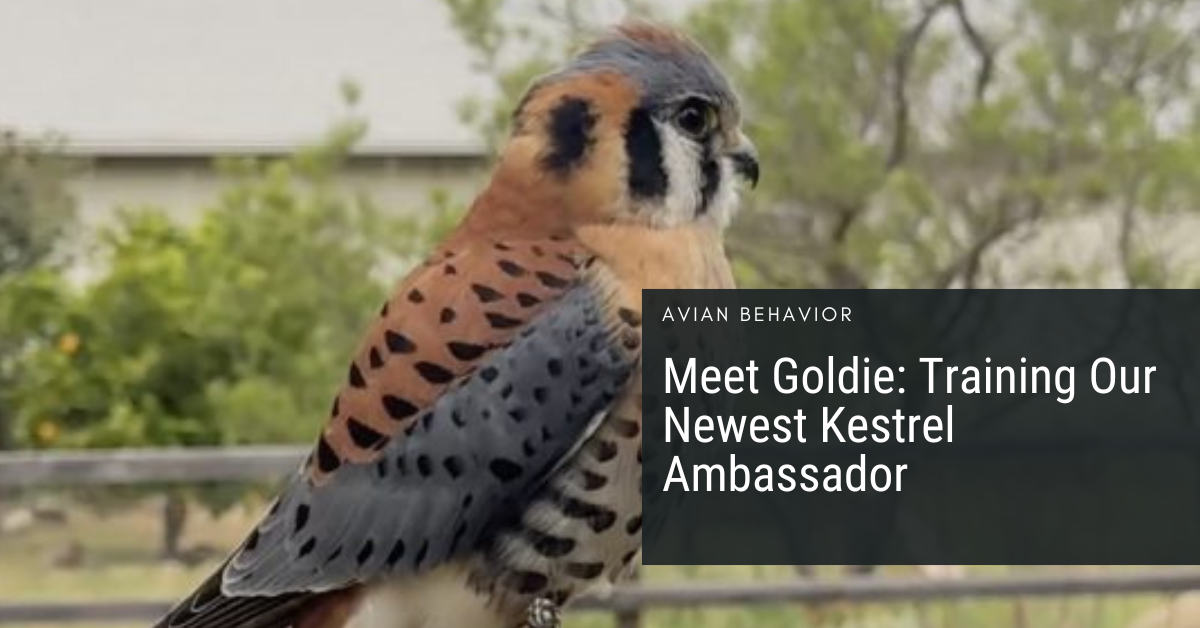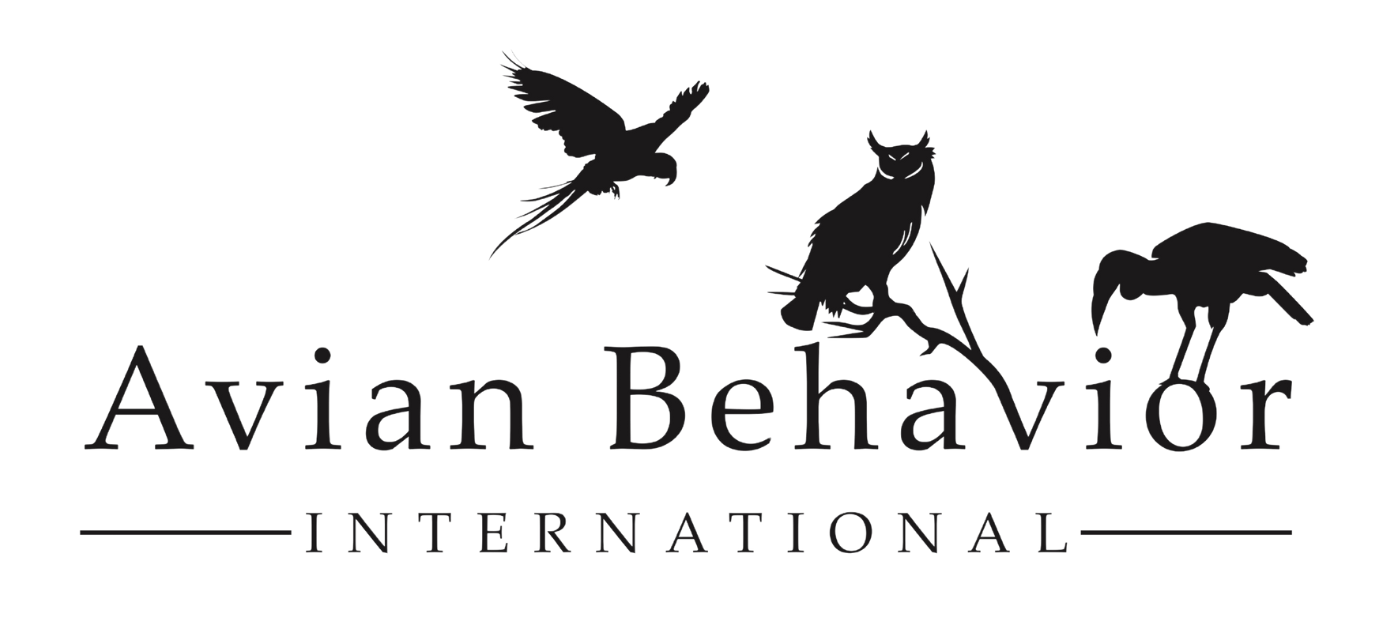
09 Oct Meet Goldie: Training Our Newest Kestrel Ambassador
American kestrels are disappearing from North American grasslands, and we’re running out of time to understand why. That’s why Goldie matters. As our newest kestrel ambassador~~,~~ is helping us build the connection between people and her species that drives real conservation action.
Right now, as she displays that classic tail-pumping behavior during training sessions, she’s preparing for her role as a bridge between humans and the wild kestrels that desperately need our help.
The Tail Pump: A Kestrel’s Balance Act
Watch Goldie for just a few moments and you’ll see it—that distinctive tail pumping motion that sets kestrels apart from other small raptors. Scientists believe this behavior helps with balance, particularly when kestrels have just landed or are consuming prey.
It’s one of those field identification tricks that separates the experts from the casual observers. From a distance, a kestrel can easily be mistaken for a dove. They’re roughly the same size, and both frequently perch on wires scanning the landscape below. But if you see that whiffle ball-sized head bobbing or the tail pumping rhythmically, you know you’ve got a kestrel.
Meet Goldie: Named for California’s Golden Fields
Goldie’s name comes from the California goldfields flower (Lasthenia californica), a fitting tribute suggested by botanical expert Joey Santore. Like the wildflowers that blanket California’s grasslands in spring, Goldie represents the natural beauty and ecological importance of our state’s native species.
Right now, Goldie is in the intensive training phase, working on a creance—a very light line attached to her jesses that allows us to safely train free flight behaviors. She’s progressing beautifully and is nearly ready for free flight in the next week or two.
Watching her master each training milestone reminds us why ambassador birds matter so much for conservation. When people connect with an individual bird like Goldie, they begin to care about the entire species—and right now, American kestrels need that care.
Why Kestrels Matter (and Why They’re Struggling)
American kestrels are specialized hunters that prey on small birds, rodents, and insects. They play a critical role in controlling pest populations that cause crop loss and spread disease. But across North America, kestrel populations have been declining.
The reasons are complex: habitat loss, competition from invasive species for nesting sites, and potentially insecticides all play a role. What we need most urgently is data—real information about where kestrels are thriving and where they’re struggling.
That’s where our work comes in.
From Ambassador Birds to Field Research
At Avian Behavior Conservancy, we’re expanding our impact beyond the education and inspiration that birds like Goldie provide. We’re launching citizen science fueld field research to support American kestrel conservation right here in California, connecting with other organizations like Golden State Kestrel Research Network who are doing incredible grassroots research.
Our 2025 American Kestrel Monitoring Project will help scientists better understand breeding habits and distributions throughout San Diego County. GPS tags will tell us which areas support healthy kestrel populations and which habitats are failing them—information that drives conservation decisions that actually work.
How You Can Help
Our American Kestrel Monitoring Project needs GPS tags to track wild kestrels and understand their movements, habitat use, and survival. Each tag costs $2,000 and provides invaluable data that drives conservation decisions.
We’re also supporting area biologists in the kestrel monitoring network with field research costs that help us identify where kestrels are thriving and where they’re struggling.
With your support, we can help ensure wild kestrels across California have the habitat and resources they need to thrive for generations to come.
[Support Kestrel Conservation]

